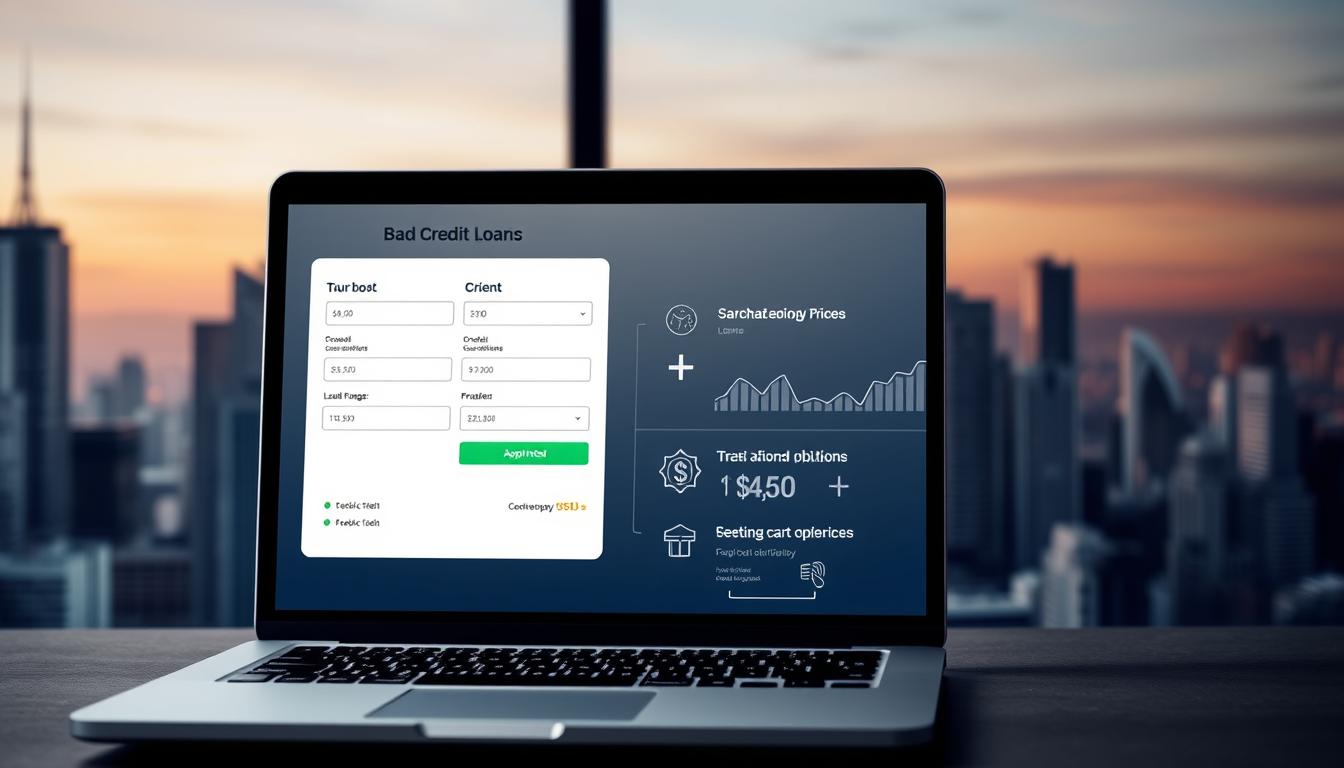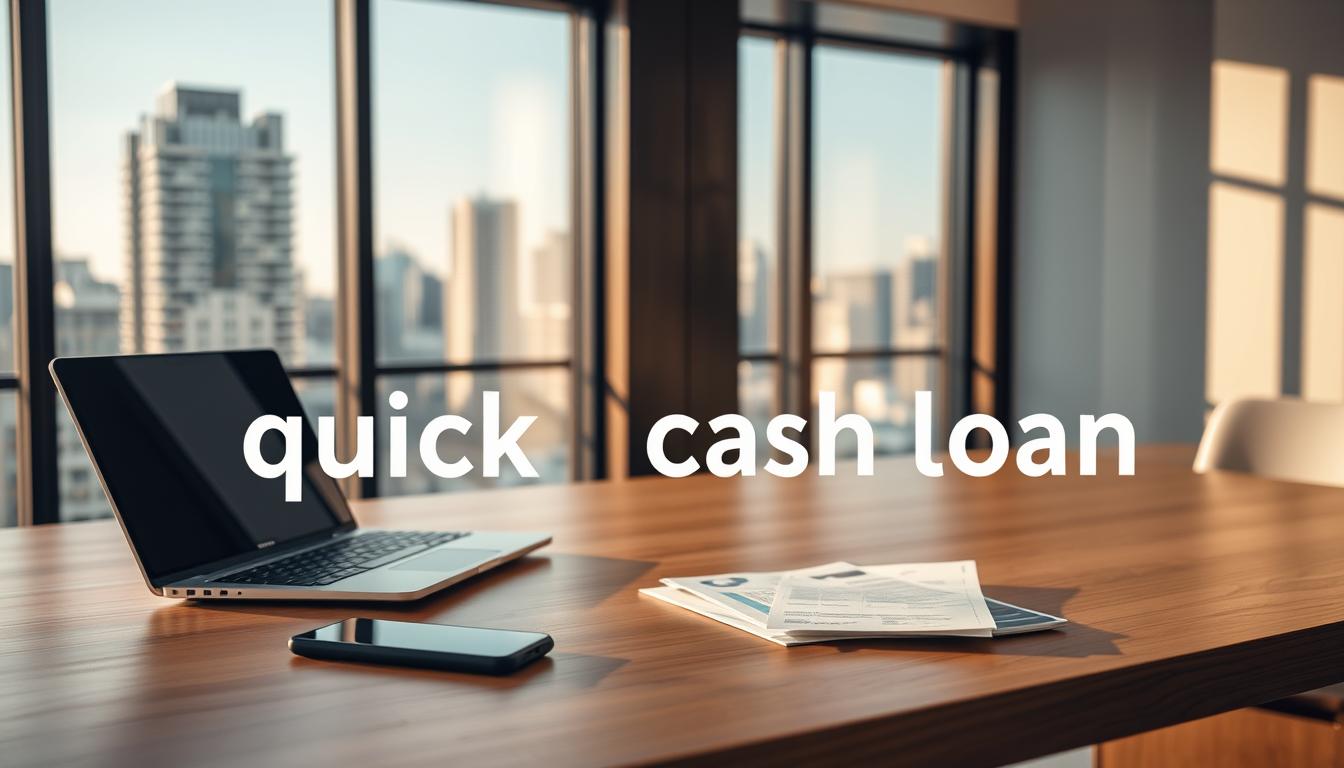Find the Right Personal Loans to Achieve Your Dreams
Did you know millions of Americans use loans online to reach their goals and handle unexpected costs? Recent data shows personal loans help with many things, like paying off debt or improving homes.
We know reaching your dreams often means you need financial freedom. That’s why low interest loans are a great option. They help you achieve your goals without spending too much.
Looking to pay off debt, fix up your home, or handle an emergency? We’ll show you how the right financial tools can help.
Key Takeaways
- Personal loans can be used for various financial needs.
- Low interest rates are available for qualified borrowers.
- Loan terms can range from 12 to 84 months.
- No origination fee, closing fee, or prepayment penalty.
- Most customers receive a same-day credit decision.
What Are Personal Loans?
Personal loans help people with various needs, like debt consolidation or home improvements. Banks, credit unions, and online lenders offer these loans. They provide quick cash loans when you need it.
These loans are unsecured, meaning you don’t need to put up collateral. This makes them easier to get, as you don’t risk your assets.
Definition and Overview
A personal loan is an agreement between you and the lender. They give you a sum of money, and you promise to pay it back with interest over time. It’s a flexible loan for many financial needs, making it popular.
Personal loans have key features:
- Fixed interest rates and repayment terms
- No collateral required
- Flexibility in using the loan amount
- Variety of repayment periods
Types of Personal Loans
There are many personal loan types for different needs. Here are a few:
- Fixed-Rate Loans: These loans have a constant interest rate, making payments predictable.
- Installment Loans: You pay these loans back in regular installments over time, from months to years.
- Bad Credit Loans: For those with poor credit, these loans have higher interest rates due to the lender’s risk.
Knowing about these loan types helps you choose the right one for your financial situation.
Why Consider a Personal Loan?
When money is tight, personal loans can be a lifesaver. They offer a flexible way to handle different financial needs. This can include paying off debt, improving your home, or covering sudden costs.
Debt Consolidation
Personal loans are great for debt consolidation. They let you merge several debts into one. This can lower your interest rate and make monthly payments easier to manage. It helps reduce stress and makes paying off debt simpler.
Home Improvements
They’re also good for home improvements. Whether you want a new kitchen or a bigger room, personal loans can help. They give you the money you need without using up your savings or getting into high-interest debt.
Unexpected Expenses
Lastly, personal loans are handy for unexpected expenses. Need to pay for medical bills or car repairs? Loans like same day loans or emergency loans can provide quick cash. This helps avoid financial problems.
It’s important to know that lenders like Wells Fargo offer personal loans. They can be used for home improvements and debt consolidation. They often have good rates and flexible payment plans.
How to Qualify for a Personal Loan
Lenders look at several things to decide if you can get a personal loan. Knowing what they look for can help you get a better loan.
Credit Score Requirements
Your credit score is very important for getting a personal loan. It shows how well you handle debt. A higher score means you might get low interest loans.
Lenders usually want a score of 700 or more. But, some might look at lower scores too.
“A good credit score is like a financial passport; it opens doors to better loan options,” says a financial expert. To keep a good score, pay on time, use credit wisely, and have a long credit history.
Income Verification
Income verification is key for lenders. They want to make sure you can pay back the loan. They often ask for pay stubs, W-2 forms, or tax returns.
Some lenders, like Discover, want at least $25,000 in annual income.
- Pay stubs
- W-2 forms
- Tax returns
Debt-to-Income Ratio
Your debt-to-income (DTI) ratio shows how much debt you have compared to your income. Lenders use this to see if you can handle more debt. A lower DTI ratio means you’re in better shape financially.
Lenders usually like a DTI ratio of 36% or less. To improve your DTI, pay off debts or make more money. This can help you qualify for a loan and strengthen your finances.
Where to Find Personal Loans
Personal loans are available from many places, each with its own pros and cons. Knowing these options helps you make a smart choice.
Traditional Banks
Traditional banks, like Wells Fargo, offer personal loans with good rates and terms. They usually need a high credit score and steady income.
Benefits: They have a solid reputation, offer many services, and might have lower rates.
Drawbacks: They have strict rules and the application can take a while.
Credit Unions
Credit unions are owned by their members and give personal loans. They often have better terms than banks.
Benefits: They provide personal service, lower rates, and are more flexible with who they lend to.
Drawbacks: You need to be a member and they might not lend as much.
Online Lenders
Online lenders are popular for being easy to use and quick. They work with many credit scores and offer loans online with different terms.
Benefits: They have fast applications, are flexible, and money is disbursed quickly.
Drawbacks: Rates and fees might be higher.
Peer-to-Peer Lending Platforms
Peer-to-peer platforms connect borrowers with investors. This can lead to better rates.
Benefits: They offer competitive rates, flexible terms, and quick applications.
Drawbacks: There’s a risk of credit issues and less government oversight.
When picking a personal loan, compare what different lenders offer. Here’s a quick look at what each usually has:
| Lender Type | Interest Rates | Eligibility Criteria | Application Process |
|---|---|---|---|
| Traditional Banks | Competitive | Strict | Lengthy |
| Credit Unions | Favorable | Flexible | Personalized |
| Online Lenders | Varying | Flexible | Quick |
| Peer-to-Peer Platforms | Competitive | Varies | Faster |
By knowing where to find personal loans, you can choose what’s best for your financial situation and goals.
Understanding Interest Rates
When you’re looking at personal loans, knowing the interest rate is key. The interest rate is what you pay extra on top of the loan amount you borrowed.
Fixed vs. Variable Rates
Personal loans can have fixed or variable interest rates. A fixed interest rate stays the same, so your payments are always the same. But, a variable interest rate can change with the market, which might change your payments.
For example, Wells Fargo offers fixed rates on personal loans. This lets you plan your payments easily. But, variable rates might start low but could go up, making your loan cost more over time.
Factors Affecting Interest Rates
Many things can change the interest rate on a personal loan. Your credit score is a big one; a better score can get you a lower rate. The loan term also matters; shorter terms usually have lower rates than longer ones.
Lenders also look at your debt-to-income ratio and income verification. If you have a low debt ratio and stable income, you might get a better rate.
How to Compare Offers
To compare loan offers well, don’t just look at the interest rate. Check the Annual Percentage Rate (APR) too. It includes fees and shows the loan’s true cost. Some lenders, like Achieve, offer discounts that can lower your rate, making the loan cheaper.
When you’re comparing, make a list of the APR, loan term, and any extra fees. This will help you find the best loan for your money situation.
The Application Process
Getting a personal loan involves some preparation and knowledge. Knowing what lenders want and the steps to take can help you succeed.
Required Documentation
First, gather all needed documents. Lenders want proof of income, ID, and sometimes more.
- Proof of Income: Pay stubs, W-2 forms, or tax returns are common.
- Identification: A valid driver’s license, passport, or state ID is needed.
- Additional Documents: Some lenders might ask for bank statements or proof of address.
For example, Discover needs a valid U.S. SSN and proof of income. Having these documents ready makes the process easier.

Step-by-Step Guide to Applying
Applying for a personal loan can be broken down into steps:
- Check Your Credit Score: Knowing your score helps understand your eligibility.
- Choose a Lender: Look for the best lender for your needs.
- Gather Documents: Have all needed documents ready.
- Submit Your Application: Fill out the form accurately and completely.
- Review and Accept the Loan Offer: If approved, review the terms before accepting.
“The key to a successful loan application is preparation and attention to detail.”
Tips for a Successful Application
To boost your chances of approval, follow these tips:
| Tip | Description |
|---|---|
| Be Accurate | Make sure all information is accurate and truthful. |
| Apply for the Right Amount | Borrowing too much can hurt your application. |
| Consider Your Credit Score | A good score can improve your eligibility and rates. |
By following these tips and understanding the process, you can get a personal loan that fits your needs.
Loan Amounts and Terms
When looking at personal loans, it’s key to know about the loan amounts and terms. Lenders have many options to fit different financial needs.
Minimum and Maximum Loan Amounts
Personal loans come in various amounts. For example, some can be from $5,000 to $50,000. The range can change a lot between lenders, so it’s smart to compare.
Key considerations for loan amounts include:
- The purpose of the loan
- Your financial situation and needs
- The lender’s policies and limits
Typical Loan Terms
Loan terms are how long you have to pay back the loan. Personal loans usually last from 2 to 5 years. But, some lenders might offer longer or shorter terms. Knowing the term is important because it affects your monthly payments and the total interest.
Factors Influencing Loan Duration
Several things can change how long your loan lasts, including:
- Credit Score: Better credit scores can lead to longer loan terms.
- Loan Amount: Bigger loans might have longer terms to make monthly payments easier.
- Income and Debt-to-Income Ratio: Lenders check if you can pay back the loan based on your income and debts.
Understanding these factors helps us choose the right personal loan. It’s about finding one that fits our financial situation and goals.
Repayment Plans
Knowing your repayment plans is key to managing your personal loan well. These plans show how you’ll pay back the loan, including how much and how often.
Lenders offer different repayment options to fit various financial needs. For example, some offer fixed monthly payments for easier budgeting. Wells Fargo provides a personal loan calculator to estimate monthly payments.
Monthly Payment Calculations
Figuring out your monthly payments is important. It involves the loan amount, interest rate, and term. A personal loan calculator makes this easy.
| Loan Amount | Interest Rate | Loan Term | Monthly Payment |
|---|---|---|---|
| $10,000 | 6% | 5 years | $193.79 |
| $20,000 | 8% | 7 years | $304.55 |
| $30,000 | 10% | 10 years | $395.55 |
Early Repayment Options
Some lenders let you pay off your loan early. This can cut down on interest and save money. Always check your loan agreement for any penalties or fees for early repayment.
Early repayment can save you money on interest and free up your finances sooner.
Consequences of Late Payments
Missing a payment or making a late one can lead to problems. You might face late fees, higher interest rates, and a lower credit score. It’s vital to pay on time to avoid these issues.
Understanding your loan terms and making timely payments are crucial for a successful repayment experience.
Common Mistakes to Avoid
Knowing the common mistakes with personal loans helps borrowers make better choices. When you apply for a personal loan, it’s easy to get excited about your goals. But knowing the potential problems can help you avoid financial trouble later.
Borrowing More Than Needed
One big mistake is borrowing more than you need. This can cause unnecessary debt and higher interest payments. For example, if you’re consolidating debt, taking out more than the total debt can lead to a bigger loan than needed.
To avoid this, think carefully about how much you really need. Achieve suggests reviewing your budget and goals before choosing a loan amount.
Ignoring Fine Print
Another mistake is ignoring the fine print of a personal loan. The fine print has important details like interest rates, fees, and repayment terms. Not reading and understanding these can lead to surprises later.
For instance, some loans have origination fees, prepayment penalties, or variable interest rates. These can greatly affect your total cost. Always read the fine print carefully and ask questions if you’re unsure.

Failing to Shop Around
Not comparing loan offers from different lenders is another mistake. Shopping around can help you find the best rates and terms. Different lenders offer different interest rates, fees, and repayment terms, so it’s key to compare.
Using a comparison table can make this easier. Here’s an example:
| Lender | Interest Rate | Fees | Repayment Term |
|---|---|---|---|
| Bank A | 6.99% | $0 Origination Fee | 5 years |
| Credit Union B | 7.99% | $100 Origination Fee | 3 years |
| Online Lender C | 5.99% | $200 Origination Fee | 7 years |
By comparing these offers, you can make a better choice. This helps you find the loan that fits your financial situation best.
The Role of Credit Reports
Credit reports are very important for getting personal loans. They give lenders a full view of your credit history. When you apply for a loan, your credit report is the first thing lenders look at.
Understanding Your Credit Report
A credit report shows your credit history. It includes your credit accounts, payment history, and who has looked at your credit. Knowing what’s in your report is key to getting a loan.
To see your credit report, contact Equifax, Experian, and TransUnion. Checking it often helps spot mistakes that could hurt your score.
How Reports Affect Loan Approvals
Credit reports are crucial for loan approvals. Lenders use them to see if you’re a good risk. A good report can help you get approved, while a bad one might mean no loan or worse terms.
Discover uses credit reports to decide on loans. This shows how important a good credit score is.
Improving Your Credit Score
Boosting your credit score can help you get better loans. To do this, pay bills on time, reduce debt, and avoid too many credit checks.
- Always pay on time to show you’re responsible with credit.
- Keep your debt low to avoid using too much of your available credit.
- Don’t apply for many loans or credit cards at once. It can hurt your score.
Understanding credit reports and working to improve your score can help you get the loan you need.
Alternatives to Personal Loans
There are many ways to meet your financial goals without personal loans. It’s important to look at all your options when you need money.
Credit Cards
Credit cards are good for small expenses or quick needs. They’re easy to use and sometimes offer rewards or cashback.
They’re great for daily costs or emergencies. But, high interest rates can apply if you don’t pay off the balance each month.
“Credit cards are a convenient financing option, but users must be cautious of accumulating debt.”
Home Equity Loans
Home equity loans let homeowners use their property’s value to borrow money. They often have lower interest rates than personal loans and credit cards.
These loans are secured by your home. This means not paying back could lead to losing your home. They’re best for big expenses like fixing up your home.
Personal Savings
Using your savings is another way to avoid loans. It means no interest to pay and can save you money.
But, using up your savings can hurt your financial safety and emergency fund. Think carefully about the pros and cons.
| Alternative | Interest Rate | Risk | Suitability |
|---|---|---|---|
| Credit Cards | High | Debt accumulation | Short-term needs, small expenses |
| Home Equity Loans | Lower | Foreclosure risk | Significant expenses, home renovations |
| Personal Savings | No interest | Depleting savings | Emergency funds, planned expenses |
Conclusion: Taking the Next Step
As we wrap up our look at personal loans, it’s key to think about your financial goals and needs. According to Achieve, it’s important to consider your financial situation before applying for a loan. This careful thought will help you choose the right path for your goals.
Assessing Your Financial Objectives
To pick the best personal loan, you need to look at your financial goals. Think about your debt-to-income ratio, credit score, and income. This will help you find a loan that fits your financial plans.
Seeking Guidance
If you’re not sure about the best loan options or need help with the application, get professional advice. Financial experts can offer valuable insights. They can help you make a choice that’s right for your financial situation.
By carefully thinking about your financial goals and getting advice when needed, you can make smart choices. This will help you reach your financial goals.









